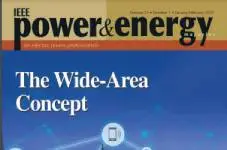Oral
01 Nov 2023
Spin-Hall nano-oscillators (SHNO) are one of the potential devices to achieve current controlled GHz frequency signals in nanoscale devices for neuromorphic computing, magnonics, and creating Ising systems1–3. However, traditional SHNOs have high auto-oscillation threshold currents and those based on magnetic tunnel junctions require a complex etching process. Besides, it is challenging to couple the oscillators to form a connected network for these applications. Here we demonstrate SHNOs based on ferrimagnetic insulator-transition metal heterostructures, specifically epitaxial lithium aluminum ferrite thin films4 with interfaces to permalloy and platinum. First, we showed that by depositing and patterning only Pt on unpatterned Li0.5Al0.5Fe2O4 (LFO) thin films, we can observe clear auto oscillations signals associated with the spin-Hall effect in Pt. We observed current polarity dependent spectral signals in Pt/LFO samples, showing that that the spin-orbit torques, not the spin Seebeck effect, are the origin of this auto oscillation signals. Further, we demonstrate a new type of hybrid SHNO based on a permalloy ferromagnetic-metal nanowire and again unpatterned low-damping ferrimagnetic insulator thin films of lithium aluminum ferrite (Pt/Py/Li0.5Al1.0Fe1.5O4 (LAFO))5. We associate the improved characteristics (e.g., a lower threshold current and higher output power) of such hybrid SHNO with the simultaneous excitation of both magnetic layers. We further find that the presence of the ferrimagnetic insulator enhances the auto-oscillation amplitude of spin-wave edge modes, consistent with our micromagnetic modeling. Meanwhile, the localization of auto-oscillations reduces the threshold current and makes the edge mode the dominant power emission source rather than the bulk mode. Further, by varying the composition and thickness of the ferrimagnetic insulator layer, we successfully fabricated hybrid SHNOs with better performance (i.e., higher output power and quality factor) by replacing LAFO with LFO. This hybrid SHNO expands spintronic applications by providing improved oscillator characteristics and new means of coupling multiple SHNOs for neuromorphic computing and advancing magnonics. Acknowledgements This research was supported by the Quantum Materials for Energy Efficient Neuromorphic Computing (Q-MEEN-C), an Energy Frontier Research Center funded by the U.S. Department of Energy (DOE), Office of Science, Basic Energy Sciences (BES), under Award DE-SC0019273. Work at Stanford is supported under DOE BES DE-SC0008505.References: 1 V.E. Demidov, S. Urazhdin, A. Zholud, A. V. Sadovnikov, and S.O. Demokritov, Appl. Phys. Lett. 105, 172410 (2014). 2 A. Khitun, M. Bao, and K.L. Wang, J. Phys. D. Appl. Phys. 43, 264005 (2010). 3 J. Grollier, D. Querlioz, K.Y. Camsari, K. Everschor-Sitte, S. Fukami, and M.D. Stiles, Nat. Electron. 3, 360 (2020). 4 X.Y. Zheng, S. Channa, L.J. Riddiford, J.J. Wisser, K. Mahalingam, C.T. Bowers, M.E. McConney, A.T. N’Diaye, A. Vailionis, E. Cogulu, H. Ren, Z. Galazka, A.D. Kent, and Y. Suzuki, Under Rev. (2022). 5 H. Ren, X.Y. Zheng, D.A.O. Mahoney, Y. Suzuki, S. Channa, G. Wu, and A.D. Kent, Nat. Commun. 14, 1406 (2023).



